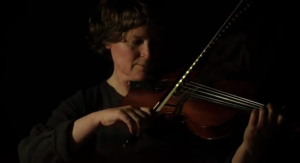
Detail from the Gundestrup Cauldron, circa 100BC, Denmark.
Images courtesy of the British Museum and the NMS
Celts could be weird and scary. They were mad for the drink and when they had it, you had to watch out for them: they saw things and became aggressive. They were radge fighters, absolutely mental, they dressed up to go into battle and they played great big war horns that made a sound that would scare the living daylights out of you. And they liked bling, loved it actually: gold, bronze, iron, glass, precious stones. They wore chunky jewellery decorated with abstract patterns and symbols. They were skilled at metalwork, leatherwork, pottery and weaving and if something precious was broken, they would mend it – a bronze flagon with a broken handle would get a different handle, or a hole would be fixed with a decorated patch, and made as good as new – better in fact. Oh and they loved parties and feasting; the women were great hosts and they were buried with their special pots and flagons, probably so they could use them for a big after-party on the other side.















